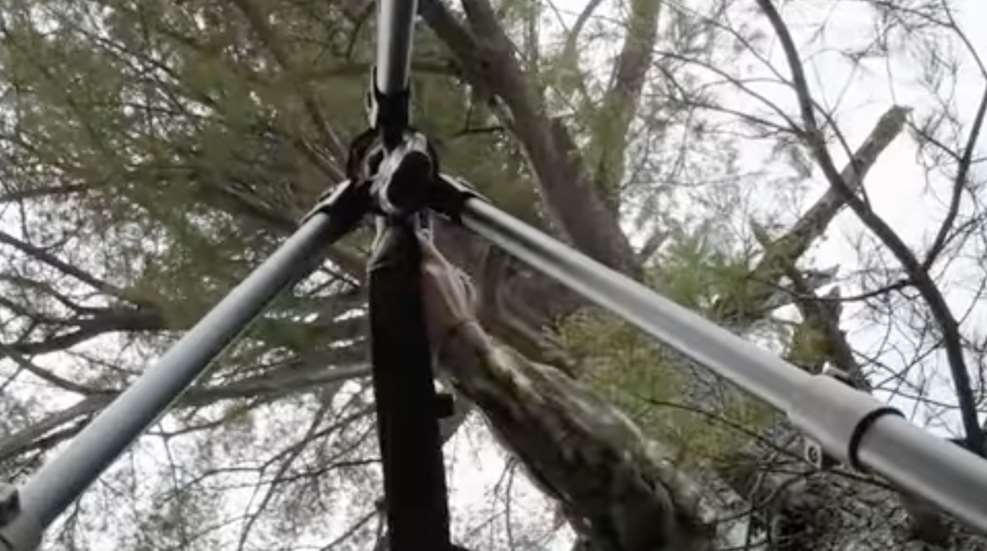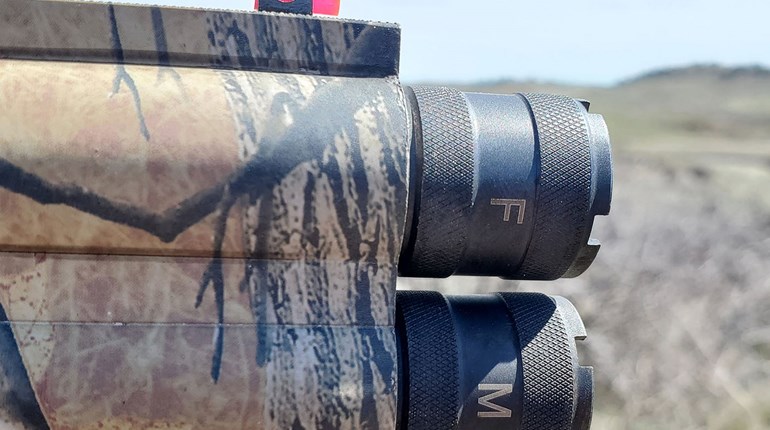
Deer hunters who do all of their hunting out of a treestand with a support bar or window on which they can rest their rifle are often shocked when they go on their first spot-and-stalk hunt and have to shoot off of sticks. Although sticks serve as a rest the same as your shooting house’s windowsill does, it’s a much different and often much less steady shooting situation—at least until you get used to it. The good news is, it doesn’t take a whole lot to turn a set of shooting sticks into a remarkably stable shooting platform—just some practice and these tips on how to do it right.
1. Calm Down
Chances are, if you’re in a hunting situation that calls for shooting sticks, you’ve been hiking or even running to get here. The animal you’re pursuing won’t always give you the luxury of time, but if you do have it, take a second to catch your breath, deal with the adrenaline rush and set your sticks up properly according to how you’ve practiced (you have practiced this before your hunt, right?). You’ll have trouble getting steady if your chest is heaving and gasping for oxygen.
2. Get Low
The closer you can get to the earth, the steadier you’ll be. This means prone (laying on your stomach) is ideal, but terrain and vegetation often don’t allow you to get that low in the field. Sitting is the next best thing. If you can’t sit, kneel, and if you can’t kneel, stand up. If you have to stand up, I like to set my sticks a bit low so I can spread my legs out and lean down into the shot, but this doesn’t work for everyone. You have to experiment (before the hunt) to find the best sitting, kneeling and standing positions for you and the best stick height for each position.
3. Decide How Many Legs You Want
The more legs on your sticks, the more stability they’ll offer and the slower they’ll be to deploy. Although they’re incredibly fast to use, I am just about hopeless with a monopod—I can never get as steady as I want with just one leg supporting my rifle. With practice, I’ve gotten decent with two-legged sticks once I get them set up properly. But a tripod is my favorite. They’re strong and supportive—just make sure you practice deploying them as well as using them, because it does take some time to get all those legs out to the right length and width.
4. Learn to Lean
With a monopod or two-legged sticks, set up so that the feet of the stick(s) are anchored into the ground and the top of the stick(s) lean back slightly toward you. Then you lean your body into the sticks, and the slight pushing-against-each-other action you’ll achieve will provide additional stability. Just don’t lean the sticks at such a steep angle that they slide forward when you lean into them. If you’re using a tripod, set it up so that one leg is pointed at you and the other two legs are spread out facing the target. You should still lean slightly into the sticks to anchor them but be careful not to lean so hard that you pull one leg off the ground. This is easier to do than you realize, especially if you’re at an angle. Making the back leg of the tripod ever so slightly shorter than the front legs helps me.
5. Use Your Support Hand
I like to use my non-shooting hand to either grab the sticks right at the V/yoke or, if the size is right, to wrap around the forearm and the yoke at the same time. Some people like to rest their hand in the V of the sticks and then rest the forearm of the gun in their palm. This works well, but it’s uncomfortable for me to hold for more than a minute, so I don’t shoot this way.
6. Stabilize Your Shooting Elbow
I once had a hunting guide put his hand on the back of my shooting shoulder and press forward as I was set up to take a standing shot off of sticks. I didn’t realize what he was doing until afterward (I made the shot), but stabilizing the shooting-side elbow goes a long way toward stabilizing the whole shot. I didn’t really love the shoulder-press method, particularly because I wasn’t expecting it, but the idea behind it was solid. If you’re shooting from sticks while standing, if possible, lean your shooting-side elbow on or against a tree, a fencepost or your hunting partner’s shoulder (be sure they’re wearing hearing pro, of course). If you’re sitting, your knee works great for this.
7. Be Flexible
You should have practiced deploying and using your shooting sticks at home, even if much of the practice was only with dry fire, but things are different in the field than they are in your living room or even on your range. On a hunt, the surface you need to set up on might be sandy or rocky or muddy or steep or unlevel or covered in thorns. You might need to make one leg of the sticks longer than the others to accommodate. The faster you can adapt and get set up before the animal moves, the better. This is all the more reason to put in plenty of practice time with your sticks, particularly if they have adjustable legs that have to be snapped into place. Primos’ excellent Trigger Sticks make that adjustment crazy quick and easy if they’re in your budget and if you don’t mind carrying them on a stalk, as they’re a good bit heavier than the classic three-pieces-of-wood-tied-with-a-rubber-hose setup.
8. Embrace the Wobble
Even doing everything right, shooting from sticks is not going to be quite as steady as shooting from a bench. There’s going to be slight movement. Dialing your magnification back to as low as you can stand will help with this considerably—it doesn’t really reduce wobble, of course, but it reduces your perception of wobble, which makes you much less nervous. If you have a good deal of wobble, you must learn to manage it and shoot at the proper time. Most wobble will settle itself into a pattern—some people see a figure 8, some see more of an oval going from bottom left to top right or bottom right to top left. Identify your own wobble pattern in practice, and as long as the pattern isn’t larger than the vital zone of the animal, practice squeezing the trigger on the up- or down-swing of the pattern as it crosses the center of the vital zone. Again, you must practice this at the range before you attempt it in the field! Don’t forget to follow through, which will help you manage recoil.
My own ideal shooting-sticks situation uses a tripod with adjustable legs that go from low sitting to low standing. If I anticipate using it in a normal sitting posture, which is my preference, I’ll extend the legs to the appropriate length before I start a stalk. I set one leg of the tripod slightly shorter than the others and point it at myself, and I sit just to the left of it (I’m right-handed). I rest the forearm of the gun in the yoke of the tripod and wrap my left hand around the yoke and the forearm at the same time. I fold my left leg in front of me and firmly plant my right foot into the ground with my right knee in the air, resting my right elbow on my knee for stability. Although not as good as prone and not super fast to get into, this position is remarkably stable, and if I keep my scope’s magnification turned down, I get minimal wobble to contend with.
The big trick to using sticks is to practice, practice, practice with them, both dry-fire and live-fire, to learn out the position that works for you and how to quickly get into it. The spot-and-stalk hunt of a lifetime is not the time to try to figure out how long your sticks should be and where your elbow is supposed to go.














































